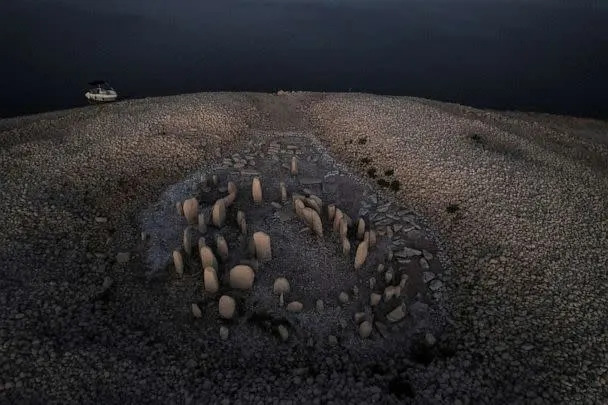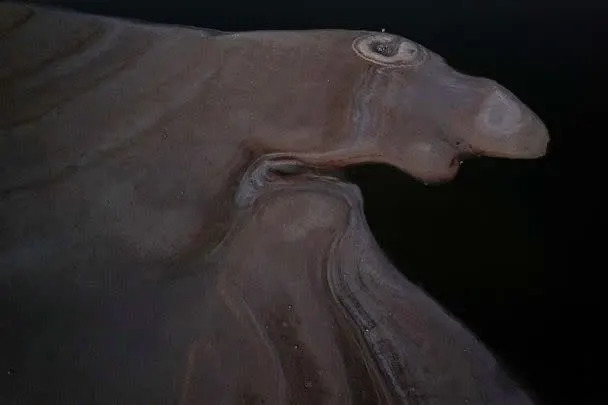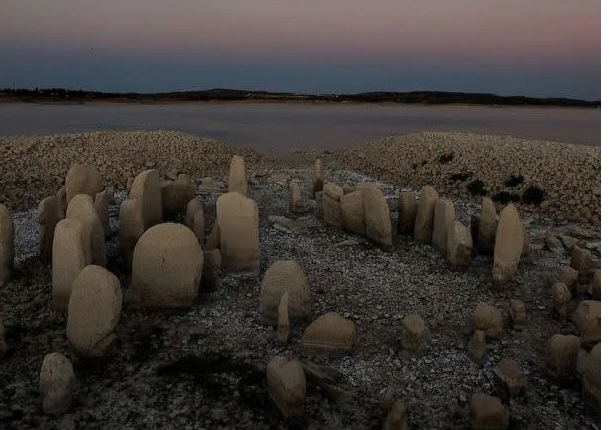A Spanish version of “Stonehenge” has reemerged amid the country’s devastating drought, officials said.
(Reuters).- The historic marvel officially called the Dolmen of Guadalperal, has only been visible four times, according to officials.
Experts believe the striking circle of dozens of megalithic stones has existed since 5000 BC. However, it was first discovered by German archaeologist Hugo Obermaier in 1926 before it became flooded in 1963 due to a rural development project under Francisco Franco’s dictatorship.

Now, the structure sits in a corner of the Valdecanas reservoir located in the country’s central province of Caceres.
As Spain faces its worst drought in 60 years, officials say the water level in the reservoir has dropped to 28% capacity.
“It’s a surprise, it’s a rare opportunity to be able to access it,” archaeologist Enrique Cedillo from Madrid’s Complutense University told Reuters.
The structure itself has an unknown creator, experts say.

Dolmens are vertically arranged stones that usually support a flat boulder or capstone, according to the New World Encyclopedia. How they became erected, however, remains a mystery.
Because it is common to find human remains near or in dolmens across Europe, it is believed that the structures served as tombs, New World Encyclopedia said.
The dolmen was last visible in 2019, when Europe was facing a drought, NASA said. This 2019 drought was the first time the entire structure became visible since it was flooded in 1963, according to NASA.
TYT Newsroom


